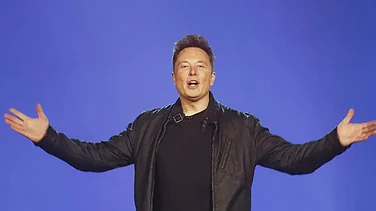When Prime Minister Narendra Modi inaugurates Ayodhya’s Ram Mandir on 22 January, the temple town located in the Awadh region of Uttar Pradesh would have seen a complete transformation of its infrastructure. Since Supreme Court delivered the landmark judgement in 2019 which allowed the Hindu trust to build a temple of Lord Ram on the site which is believed to be his birthplace, Ayodhya has seen inflows of investment from both central and state governments and thousands of donors across the country. The case was filed over the existence of Babri Masjid at the location which was demolished in 1992 by a mob.
Advertisement
Built at the cost of approximately Rs 1,800 crore (close to $217 million), the Ram Mandir is expected to attract over 100,000 visitors every day if official estimates are to be believed. To prepare for the possible surge in number of tourists visiting the city every year, the state government has prepared a master plan which would require an investment of over Rs 85,000 crore till 2031 to further develop the city.
Developing Ayodhya As A Hub
India earns a significant amount of money from religious tourism every year. The country earned over Rs 1.34 lakh crore in 2022, posting a growth 106 per cent over the number recorded in 2021. Tourism data of UP government shows that Ayodhya attracted over 23 million tourists in 2022 which can cross new records post the completion of Ram Mandir’s construction.
Advertisement
Other prominent religious tourism sites in the country include Tirupati, Varanasi, Shirdi, and Kedarnath, among others. As per the vision of the government, development of tourism infrastructure is expected in the Ayodhya Development Authority Area of 875 square kilometres. Recently, PM Modi inaugurated the new airport, which was built at the cost of over Rs 1,460 crore, and the redeveloped railway station.
To capitalise on the tourism opportunity, players in aviation and hospitality industries are flocking to the city. From Taj to Radisson, upscale hotels are marking new ventures in the city with nearly 50 major hotel construction projects currently underway in the city.
In the aviation sector, SpiceJet has amplified Ayodhya's connectivity with non-stop flights to Chennai, Bengaluru, and Mumbai, starting February 1. The aviation surge is complemented by IndiGo and Air India Express, contributing to enhanced daily flight connections between Ayodhya and Delhi.
But before tourists from across the country and the world travel to the temple town, the 22 January marquee event will see the presence of several prominent industrialists and celebrities along with political leaders.
Attention On Inauguration
The pran prathistha ceremony set to be held on 22 January will see inauguration of the first floor of the Ram Mandir. The invite to the event has been sent to several big industrialists such as Gautam Adani, Ratan Tata, Mukesh Ambani, and Kumar Mangalam Birla, among others. Several companies have contributed to the construction of Ram Mandir and the surrounding complex, which includes Larsen and Toubro.
Advertisement
In the very first week post the inauguration, traffic between 300,000 and 700,000 people is reportedly expected. The attendance of the event has also been in the news due to the controversies over the list of invitees.
Several political parties have received the invite for the event but the rejection of Congress had caused a controversy. West Bengal Chief Minister and TMC supremo Mamata Banerjee is also set to skip the event and hold a rally on the same day in her home state. The ruling BJP party has criticised the decision to skip the event, calling it an “anti-Ram” move.
Advertisement
But putting the political contest aside, the city of Ayodhya is set to receive an economic boost in the coming years as more money flows into its infrastructure and tourism economy.















 Just one email a week
Just one email a week